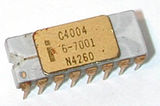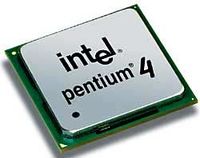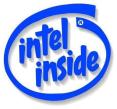|
INTEL
|
||||||||||||||||||||||
|
HOME | BIOLOGY | FILMS | GEOGRAPHY | HISTORY | INDEX | MUSIC | THE BOAT | SOLAR BOATS | SPONSORS |
||||||||||||||||||||||
|
Intel is also an abbreviation for intelligence, used in reference to military intelligence and espionage, but this article is about Intel Corporation.
Intel Corporation (NASDAQ: INTC, SEHK: 4335), founded in 1968 as Integrated Electronics Corporation, is a U.S.-based multinational corporation that is best known for designing and manufacturing microprocessors and specialized integrated circuits. Intel also makes network cards, motherboard chipsets, components, and other devices. Intel has advanced research projects in all aspects of semiconductor manufacturing, including MEMS. Overview
Intel was founded in 1968 by Gordon E. Moore (a chemist and physicist) and Robert Noyce (a physicist and co-inventor of the integrated circuit) when they left Fairchild Semiconductor. It is noteworthy that Intel competitor AMD was also founded by the Traitorous Eight, in 1969. Intel's employee number four was Andy Grove (a chemical engineer), who ran the company through much of the 1980s and the high-growth 1990s. It is Grove who is now remembered as the company's key leader. By the end of the 1990s, Intel was one of the largest and most successful businesses in the world, though fierce competition within the semiconductor industry has since diminished its position somewhat.
Intel C4004, the first single-chip microprocessor 1971 The "gold and white with gray traces" specimen belongs to the initial CERDIP series
SRAMS and the microprocessor
The company's first products were random-access memory integrated circuits, and Intel grew to be a leader in the fiercely competitive DRAM, SRAM, and ROM markets throughout the 1970s. Concurrently, Intel engineers Marcian Hoff, Federico Faggin, Stanley Mazor and Masatoshi Shima invented the first microprocessor. Originally developed for the Japanese company Busicom to replace a number of ASIC's in a calculator already produced by Busicom, the Intel 4004 was introduced to the mass market on November 15, 1971, though the microprocessor did not become the core of Intel's business until the mid-1980s. (Note: Intel is usually given credit with Texas Instruments for the almost-simultaneous invention of the microprocessor.)
From DRAM to microprocessors
In 1983 at the dawn of the personal computer era, Intel's profits came under increased pressure from Japanese memory-chip manufacturers, and then-President Andy Grove drove the company into a focus on microprocessors. Grove described this transition in the book Only the Paranoid Survive. A key element of his plan was the notion, then considered radical, of becoming the single source for successors to the popular 8086 microprocessor.
Until then, manufacture of complex integrated circuits was not reliable enough for customers to depend on a single supplier, but Grove began producing processors in three geographically distinct factories, and ceased licensing the chip designs to competitors such as Zilog and AMD. When the PC industry exploded in the late 1980s and 1990s, Intel was one of the primary beneficiaries.
The rise of PC architecture
During the 1990s, Intel's Intel Architecture Labs (IAL) was responsible for many of the hardware innovations of the personal computer, including the PCI Bus, the PCI Express (PCIe) bus, the Universal Serial Bus (USB), and the now-dominant architecture for multiprocessor servers. IAL's software efforts met with a more mixed fate; its video and graphics software was important in the development of software digital video, but later its efforts were largely overshadowed by competition from Microsoft. The competition between Intel and Microsoft was revealed in testimony at the Microsoft antitrust trial.
Intel Pentium 4 Processor
Partnership with Apple
On June 6, 2005, Apple Computer CEO Steve Jobs announced in his keynote address at WWDC that Apple would be transitioning from its long‐favoured PowerPC architecture to Intel CPUs. Reasons stated for the change were vague, but included thermal issues, as recent G5–class PowerPC chips are well‐known for running hot. Also, it was implied that the future PowerPC roadmap was unable to satisfy Apple's needs in terms of computing power. In particular, the large power requirement of the G5 chips was seen as a major stumbling block, preventing the placement of such a chip in one of Apple's laptop computers, the PowerBook and iBook. The switchover to Intel began on January 10, 2006, with the release of the MacBook Pro and a revised iMac followed by a revised Mac Mini released February 28th, 2006. Apple initially planned to put Intel chips in all of their computers by the end of 2007, but according to Jobs the transition will now be complete by the end of 2006.
Competition and antitrust
Intel's dominance in the x86 microprocessor market led to numerous charges of antitrust violations over the years, including FTC investigations in both the late 1980s and in 1999, and civil actions such as the 1997 suit by Digital Equipment Corporation (DEC) and a patent suit by Intergraph. Intel's market dominance (at one time it controlled over 85% of the market for 32-bit PC microprocessors) combined with Intel's own hardball legal tactics (such as its infamous 338 patent suit versus PC manufacturers) made it an attractive target for litigation, but few of the lawsuits ever amounted to anything.
Currently, the only major competitor to Intel on the x86 processor market is Advanced Micro Devices (AMD), with which Intel has had full cross-licensing agreements since 1976: each partner can use the other's patented technological innovations without charge. Some smaller competitors such as VIA and Transmeta produce low-power processors for small factor computers and portable equipment.
A case of industrial espionage arose in 1995 that involved both Intel and AMD. Guillermo Gaede, an Argentine national formerly employed both at AMD and at Intel's Arizona plant, pled guilty in March 1996 of attempting in 1993 to sell the i486 and Pentium designs to AMD and to certain foreign powers. Gaede videotaped data from his computer screen at Intel and mailed it to AMD, which alerted Intel and authorities, resulting in Gaede's arrest.
In June 2005, AMD sued Intel in two jurisdictions for anticompetitive practices. The Japanese Fair Trade Commission found in favor of AMD; the other case will be heard by a court in Delaware. The case in Japan led to "dawn raids" by the European Commission on some European Intel offices in July 2005.
Intel filed its response in September to AMD's lawsuit and refuted AMD's claims, stating that its business practices are fair and lawful. In its rebuttal, Intel laid out the skeleton of its legal defense, which included a deconstruction of AMD's offensive strategy and levied the charge that AMD's long-struggling market position is largely a result of bad business decisions and management incompetence, including underinvestment in essential manufacturing capacity and overreliance on outsourcing chip foundries.
Legal experts predict the lawsuit will most likely drag out for a number of years, since Intel's response indicates they are not likely to try and settle with AMD.
Leadership
Robert Noyce was Intel's CEO at its founding in 1969, followed by co-founder Gordon Moore in 1975. Andy Grove became the company's President in 1979 and added the CEO title in 1987 when Moore became Chairman. In 1997 Grove succeeded Moore as Chairman, and Craig Barrett, already company president, took over. On May 18, 2005, Barrett handed the reins of the company over to Paul Otellini, who previously was the company president and was responsible for Intel's design win in the original IBM PC. The board of directors elected Otellini, and Barrett replaced Grove as Chairman of the Board. Grove stepped down as Chairman, but will be retained as a special advisor.
Corporate governance
Current members of the board of directors of Intel are: Craig Barrett, Charlene Barshefsky, John Browne, James Guzy, Reed Hundt, James Plummer, David Pottruck, Jane Shaw, John Thornton, and David Yoffie.
Origin of the name
At its founding, Gordon Moore and Robert Noyce wanted to name their new company "Moore Noyce". This name, however, sounded remarkably similar to "more noise" — an ill-suited name for an electronics company, since noise is typically associated with bad interference. They then used the name NM Electronics for almost a year, before deciding to call their company INTegrated ELectronics or "Intel" for short. However, Intel was already trademarked by a hotel chain, so they had to buy the rights for that name at the beginning.
Financial information
Its market capitalization is about $119 billion (March 29, 2006).
Stock exchanges
Diversity
Intel also has a strong Diversity Initiative, including employee diversity groups as well as supplier diversity programs. Intel Like many companies with employee diversity groups, they include groups baced on race and nationality as well as sexual identity and religion. In 1994, Intel sanctioned one of the earliest corporate Gay, Lesbian, Bisexual, and Transgender employee groups, and supports a Muslim employees group, a Jewish employees group, and a Bible-based Christian group.
Intel received a 100% rating on the first Corporate Equality Index released by the Human Rights Campaign in 2002. It has maintained this rating in 2003 and 2004. In addition, the company was named one of the 100 Best Companies for Working Mothers in 2005 by Working Mother magazine. However, Intel's working practices still face criticism, most notably from Ken Hamidi, a former employee who has been subject to multiple unsuccessful lawsuits from Intel.
Controversial issues
Antitrust claims
In June 2005, AMD, Intel's chief rival in the x86 microprocessor market, filed an antitrust claim against Intel and its Japanese subsidiary in a Delaware court. Amongst other accusations, AMD alleged that Intel was unlawfully maintaining its monopoly through unfair business practices, such as drastically lower pricing for customers on the condition that Intel microprocessors were used exclusively in their systems. Whilst proving that Intel holds a monopoly is simple (the company is reckoned to have an 80%–90% share of the processor market), the debate over the "scare and coercion" tactics supposedly employed by Intel is likely to be more protracted. IT insiders foresee the case to be a landmark ruling in what is a fiercely competitive market.
Advertising
Intel has become one of the world's most recognizable computer brands following its long-running
"Intel Inside" campaign. The campaign, which started in 1990, was created by Intel marketing manager Dennis Carter. The four-note jingle was introduced the following year and by its tenth anniversary was being heard in 130 countries around the world.
The Intel Inside program is very lucrative for advertisers. Intel pays half the advertising costs for any ad that uses the "Intel Inside" logo. However, in print media, Intel stipulates that the page the ad is on must not contain any references to competitors, such as AMD. If the ads do not meet these requirements, Intel does not pay half the cost and the advertiser is prohibited from using the "Intel Inside" logo. Intel employs staff whose primary function is looking for advertisements which violate the agreement. Advertisers found doing so—many of which are "mom and pop" shops ignorant of the reimbursement agreement—are requested to stop violating the use of the logo and are then told how to legally use the logo and get part of their advertising costs reimbursed.
The Centrino advertising campaign has been hugely successful, leading to the ability to access wireless internet from a laptop becoming linked in consumers minds to Intel chips. In the UK this has caused some controversy, as the ASA upheld complaints that this was a misleading advert.
PC companies advertising products containing Intel chips are required to include the jingle in their film and television advertisements in order to receive the reimbursement.
In December 2005, Intel phased out the "Intel Inside" campaign in favour of a new logo and the slogan, "Leap ahead". The new logo is clearly inspired by the "Intel Inside" logo. In fact, sometimes "Intel Inside" is used, only this time with the processor name between the two words. Like so: "Intel Core Duo Inside".
In mid January 2006, Intel announced that they were dropping the long running Pentium name from its processors. They phased out the Pentium names from mobile processors first, when the new Yonah chips, branded Core Solo and Core Duo, were released. The desktop processors will quietly change from the Pentium brand when the Core line of processors are available. The Pentium name was first used to refer to the 586 Intel processors (Pent refers to the 5 in 586).
Though some in the Macintosh community were concerned that Intel's branding, including the decals and jingle, would be used with the new Intel-based Macintoshes, this has not occurred.
Intel's "Intel Inside" campaign has generally been considered to be world class marketing. However, over the years there have been several plays on the Intel branding scheme which have appeared on the web. While such jabs at Intel are obviously beyond the company's ability to control, they do tend to show that not everyone believes that Intel's programs and policies are always world class. For example, there is the popular "evil inside" logo[1], the ubiquitous picture of a tombstone with "R.I.P Intel Inside" [2], and the descriptive "Idiot Outside" logo: [3]. All of these are part of the tech culture now that Intel is losing market share to AMD [4].
Intel is a major sponsor of the BMW Sauber Formula 1 racing team.
Jingle
The famous "D flat d flat g flat d flat a flat" jingle was written by Walter Werzowa from the Austrian 1980s sampling band Edelweiss .
LINKS and REFERENCES:
A taste for adventure capitalists
Solar Cola - the healthier cola alternative
This material and any views expressed herein are provided for information purposes only and should not be construed in any way as a prospectus or offer. Please contact the company concerned for information of any business opportunity or specific program. Before investing in any business, you must obtain, read and examine thoroughly its disclosure document or offering memorandum.
|
||||||||||||||||||||||
|
This
website
is Copyright © 1999 & 2006 NJK. The bird |
||||||||||||||||||||||
|
BLUEBIRD ELECTRIC CAR MANUFACTURERS ELECTRIC CARS ELECTRIC CYCLES SOLAR CARS |
||||||||||||||||||||||





